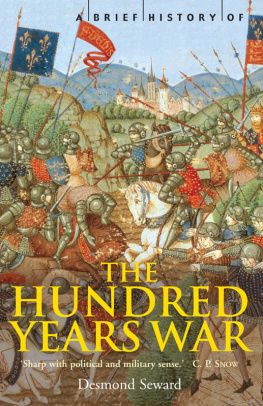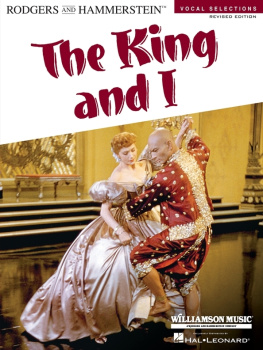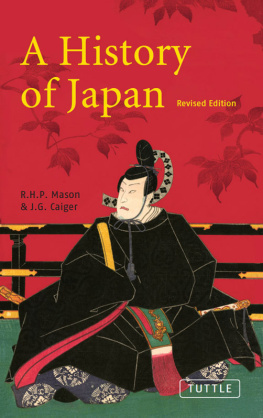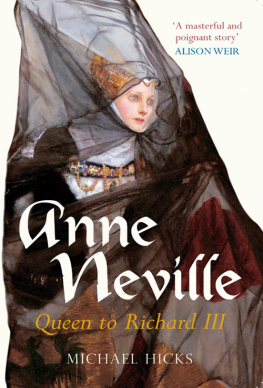Seward - Richard III
Here you can read online Seward - Richard III full text of the book (entire story) in english for free. Download pdf and epub, get meaning, cover and reviews about this ebook. City: New York, year: 2014, publisher: Pegasus, genre: Non-fiction. Description of the work, (preface) as well as reviews are available. Best literature library LitArk.com created for fans of good reading and offers a wide selection of genres:
Romance novel
Science fiction
Adventure
Detective
Science
History
Home and family
Prose
Art
Politics
Computer
Non-fiction
Religion
Business
Children
Humor
Choose a favorite category and find really read worthwhile books. Enjoy immersion in the world of imagination, feel the emotions of the characters or learn something new for yourself, make an fascinating discovery.
- Book:Richard III
- Author:
- Publisher:Pegasus
- Genre:
- Year:2014
- City:New York
- Rating:3 / 5
- Favourites:Add to favourites
- Your mark:
- 60
- 1
- 2
- 3
- 4
- 5
Richard III: summary, description and annotation
We offer to read an annotation, description, summary or preface (depends on what the author of the book "Richard III" wrote himself). If you haven't found the necessary information about the book — write in the comments, we will try to find it.
Seward: author's other books
Who wrote Richard III? Find out the surname, the name of the author of the book and a list of all author's works by series.
Richard III — read online for free the complete book (whole text) full work
Below is the text of the book, divided by pages. System saving the place of the last page read, allows you to conveniently read the book "Richard III" online for free, without having to search again every time where you left off. Put a bookmark, and you can go to the page where you finished reading at any time.
Font size:
Interval:
Bookmark:

Richard III
ENGLANDS BLACK LEGEND

DESMOND SEWARD

RICHARD III
Pegasus Books LLC
80 Broad Street, 5th Floor
New York, NY 10004
Copyright 1983 by Desmond Seward
First Pegasus Books hardcover edition 2014
All rights reserved. No part of this book may be reproduced in whole or in part without written permission from the publisher, except by reviewers who may quote brief excerpts in connection with a review in a newspaper, magazine, or electronic publication; nor may any part of this book be reproduced, stored in a retrieval system, or transmitted in any form or by any means electronic, mechanical, photocopying, recording, or other, without written permission from the publisher.
ISBN 978-1-605-98603-6 (e-book)
ISBN 978-1-605-98575-6
For Reresby and Penelope Sitwell
It is necessary for a prince who wishes to
survive to know how to do wrong.
Machiavelli, II Principe
Lo, ye all Englishmen, see ye not what a
mischief here was?
Sir Thomas Malory, Morte dArthur
PREFACE TO THE NEW EDITION
Few figures in English history divide opinion so sharply as Richard III. Most people think that Shakespeares portrayal of him as a misshapen hellhound must be pretty near the truth, yet a vociferous minority see him as a victim of Tudor propaganda almost a wronged Arthurian hero who was guiltless of the murder of the Princes in the Tower. The former include nearly every professional medievalist, while the latter have a genius for image-changing public relations.
The most important addition to what we know about Richard since this book was first published, of course, has been the dramatic discovery of what is believed to be his skeleton in 2012 beneath a parking lot at Leicester. The search was initiated by a group of dedicated revisionists. Ironically, it has resulted in their collectively shooting themselves in the foot.
Because everything revealed by the skeleton confirms the traditional view of Richard III. A nightmarishly-deformed spine establishes beyond any question that he was misshapen; previously, revisionists had insisted his crookback was a Tudor lie, a key part in the fiendish plot to smear his memory. The wounds on his skull, evidence of a frenzied hail of blows, point to the hatred he inspired among his opponents, as does his burial naked, in a hole in the ground, instead of in a proper grave.
In any case, every twentieth century discovery about Richard had indicated he was a ruthless, brutal, opportunist. The most dramatic was finding Domenico Mancinis account, written in 1483, of his seizing the throne and how Londoners suspected he would soon kill his nephews in the Tower bearing out Thomas Mores History of King Richard the Third, from which Shakespeare derived much of his material. No less important was identifying the author of the damning continuation to the Croyland Chronicle as almost certainly Richards own lord chancellor, John Russell, Bishop of Lincoln its authorship having formerly been misleadingly ascribed by revisionists to credulous old Croyland monks.
Unsurprisingly, Englands Richard III Society has sometimes been let down by its belief that research must inevitably find proof of his moral nature. When the Society published Richards register of royal warrants (Harleian MSS 433) we learned how he had been the first English monarch to appoint a Bear Ward to keep bears that, deprived of their claws, were chained to a post and savaged to death by mastiffs. Clearly keen on what in his warrant he terms the game, he had a bear-baiting pit installed in a tower at Warwick Castle.
Most telling of all, in recent years exhaustive investigation by academics has established that during his reign the Yorkist party imploded; even members of Richards own household went into exile to join Henry Tudor the obvious inference being that they did so from disgust at the kings murder of Edward V and his brother. The small size of his army at Bosworth, the reluctance of many of his troops to fight, and his subsequent betrayal can be attributed to similar enmity.
My description of Richard III and his career will upset those who are convinced of his innocence. But I am no less sincerely convinced of his guilt.
Desmond Seward, Hungerford, 2014
LIST OF PLATES
39. Brass of William Catesby.
This is a very personal interpretation of Richard III. No book on the Heathcliff of English Kings can be anything else. It is difficult to avoid having strong views on a man who committed the nastiest state murders in English history.
I have been enthralled by him since I was eleven years old. For a long time I believed passionately in his innocence (so well and persuasively argued in Josephine Teys charming novel, The Daughter of Time). As I grew older and learnt to appreciate Thomas More, I began to wonder how someone of such integrity could stoop to character assassinationeven though posthumousas he appeared to, in his history of Richard. Then, having read Paul Murray Kendall, I was inclined to think that the Duke of Buckingham had killed Edward V and his brother (although this was not Kendalls view). Yet More, not a man to tell lies, still made me uneasy. My final position as a believer in Richards innocence was a despairing compromise. Something must have gone wronghe had been misunderstood by his henchmen, who perhaps killed the boys during a crisis.
At last I read the actual sources, the testimony of men who had been observers in London when he seized power in 1483. Reluctantly, I became convinced of his guilt. Once the conversion started I found myself suspecting that the seizure and the murders were both part of a contingency planin case his brother Edward IV should die prematurelywhich he had laid well in advance.
As others have discovered before me, the evil Richard is even more interesting than the good Richard. Instead of being the victim of a lost cause, he becomes one of the most alarming figures in European history. But to accept his guilt it is indispensable to read at least a summary of the sources. Hence my regrettably complex Introduction to the book.
This is the most hostile life of Richard III to appear for over a century. I must apologise for any affront to the feelings of so many people who areand who always will beconvinced of his innocence. I once shared their conviction and know how sincerely it is held.
I would like to thank Mr Reresby Sitwell, Elisabeth, Viscountess Pollington, Mr Jonathan Martin and Mr Steven Lyle-Smythe for reading the typescript. I am also indebted to Miss K. M. Longley, Archivist to the Dean and Chapter of York Minster, to Dom Sylvester Houdard of Prinknash Abbey, to the Hon. Nicholas Asshetonthe latter helped me with details of the career of his ancestor, Sir Ralph Assheton, Vice-Constable of England during Richards reignand to Peter Drummond-Murray of Mastrick, Slains Pursuivant-of-Arms, who explained the heraldic significance of the white boar. Mr and Mrs Steven Bingham, who took me over Bosworth Field and showed me Fotheringay where Richard was born, gave me enormous encouragement. I am grateful to Miss Susan Butterworth, Miss Anne Siddall and Mrs Patricia Pierce for their constructive editorial criticisms, and to Miss Charlotte Deane who found the pictures. As so often before, I owe a very great deal to the staffs of the British Library and the London Library for their invaluable assistance.
it is therefore convenient somewhat to show you ere we further go, what manner of man this was that could find in his heart so much mischief to conceive.
Next pageFont size:
Interval:
Bookmark:
Similar books «Richard III»
Look at similar books to Richard III. We have selected literature similar in name and meaning in the hope of providing readers with more options to find new, interesting, not yet read works.
Discussion, reviews of the book Richard III and just readers' own opinions. Leave your comments, write what you think about the work, its meaning or the main characters. Specify what exactly you liked and what you didn't like, and why you think so.












